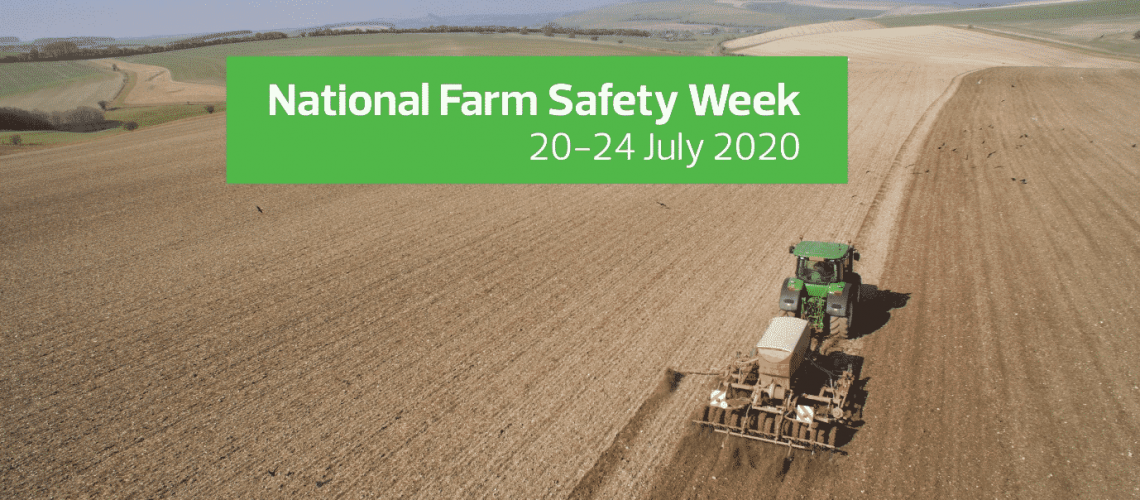Recently WAFarmers was invited to attend a summit on farm safety where both the responsible Minister for Commerce Bill Johnson and the Minister for Agriculture Alannah MacTiernan gave the industry a simple message. We are coming after you.
Either address the high level of deaths and injuries or the government was going to go after farmers by using all its powers, including the dramatically increased new penalties and the industrial Manslaughter laws it is seeking to introduce.
The new penalties are brutal, they were introduced in 2018 and include lifting Level 1 fines from $50k to $450k, level 4 fines from $500k to $2.7m and goal terms from 2 to 5 years and if the new proposed Industrial manslaughter laws get passed the penalty is a maximum of 20 years in gaol and $10m in fines.
To drive home the message that the government is serious about wanting your farm to look and feel like a mine site they have appointed an additional 21 inspectors plus $12.9m in funding to ensure they have the resources to go farm to farm checking compliance with the law.
No longer can you just pull on your work clobber and boots and head out the door each morning thinking only about work, nor is it good enough to go the next step and pull on your fluro and steel capped boots and walk past the SafeFarms manuals that you paid $1000 for and which sits unopened in your office.
This government has changed forever the way we have to approach farm safety and they are not mucking about, they want the stats to come down whatever the cost – to you.
Safety has to be everywhere across the farm from the sign on the front gate requiring visitors to report to the office, induction programs, equipment checklists and safety warning signs, without it you have no defence against the harshest penalties if something goes wrong.
As no political party is offering to wind back the new penalties, we have to accept what is in place is likely to stay and work to ensure we are as compliant as possible.
But WAFarmers will continue to fight against the planned new Industrial Manslaughter laws as they will disproportionately be used against small business owners and directors even when there is no evidence such extreme penalties work to change behaviour.
What does change behaviour is long and well funded public campaigns; think smoking, obesity, skin cancer, kids and pools, alcohol, drugs, drink driving, speeding, sharks, social distancing…. you name it if the government wants you to do something different a few million dollars gets allocated to an ongoing public awareness campaign. And they work well.
The government well knows that education and awareness is more effective at changing behaviour than threats and fines. Its why they have not imposed life imprisonment for every major offence. For instance, dangerous driving causing death carries a maximum penalty of 7 years and not life. Which just highlights how extreme the industrial manslaughter penalty of 20 years is and how out of step it is with community standards.
Following on from the summit we wrote to both Minister’s in good faith offering suggestions on how to drive an improved culture of farm safety.
Here are excerpts from my correspondence back and forth with the government.
Dear Minister’s Johnson and MacTiernan
While the briefing today was informative and the stats sobering, unfortunately we are very different to the mining industry because our sector does not require the regulatory approvals that government has over the mining and petroleum sectors to drive change, nor the union influence, nor do our farmers start their working careers in big mining companies with existing well funded safety structures that help set industry culture for the juniors and prospectors.
We are better compared to the challenge of changing behaviour in the community around drug and alcohol, smoking, speeding, pool safety, drink driving and domestic violence.
All things the government invests in heavily if it wants to save lives and see better community outcomes.
Safety on farm will start with attitude changes around the farmhouse kitchen table as there is no boardroom in the majority of the states 5000 farm businesses.
If the government seriously wants change it has to put in the sort of money that has gone with other long term government behavioural change community challenges. For example, Healthways has an annual budget of $7m from the state government.
To halve the number of accidents and incidents in 4 years would require a minimum budget of $2m pa. Just as the government funds the WA Rural Financial Counselling Service it should fund a new body around farm safety.
This will not be driven by peak bodies but they can assist government or a government established steering body.
Trevor Whittington
27 May 2020
In reply
Dear Mr Whittington
Thankyou for your email of 27 May 2020, addressed to the Hon Alannah McTiernan and myself, regarding the outcomes of the Farm Safety Summit.
As highlighted in your email, there is clearly a major task ahead of the industry to meet the challenge of achieving zero harm safety culture ini the agricultural industry. This challenge is exemplified by the fact that during the 10 year period from 2009/10 to 2018/19, there were 28 work related fatalities recorded in Western Australian farms. The agriculture industry accounted for 17 per cent of all work related fatalities in Western Australia in this period, more fatalities than in any other industry, including construction and mining.
I note your suggestion that the Government should fund and lead safety initiatives. As I made clear at the Summit, the Government is not in a position to provide the level of financial support you suggest but is keen to work with the Farming sector to achieve change, recognising that there will need to be some extra Government resources applied to the task.
I can, as indicated commit some new resources but I am also keen to see what resources the industry can commit to achieve the outcome we collectively seek.
Bill Johnson
23 June 2020
My reply
Dear Ministers
It is disappointing to hear that the government after informing our industry that it wants to address the high level of safety incidents on farm and work with industry towards a zero harm outcome does not have the resources to help drive a new farm safety culture.
We note however that the government has allocated $12.9m to drive the compliance side but now does not have the funds needed to help change the behavioural side of farm safety.
As you would be aware it is a well-established part of public policy that enforcement and higher penalties rarely are enough to change behaviour, if we want good community outcomes then education and awareness is equally if not more effective.
As previously pointed out the state’s agricultural industry is vastly different to the mining sector which has deep pockets and a need to conform to strict rules to gain approvals to access the states minerals.
Our farm businesses are not big business. We are made up of 5000 predominantly small businesses with the vast majority being family run spread across over 30 different sectors, many of which have no active peak body.
There is no Chamber of Minerals and Energy with 25 plus staff and a multimillion dollar budget that represents all of the agricultural industry and is available to coordinate and fund an industry wide campaign covering ever sector from bees to beef, wine to wheat.
The reality is there is no resources as you have requested, coming out of industry to partner with government to address the issue.
As you know we struggled even to raise a few thousand dollars from CBH and CSBP to run a photo and poster comp last year on farm safety as part of the Agricultural Working Group, a group set up by government to attempt to address the issue.
As I have outlined in my earlier email, to attempt to halve the current statistics by 2025 will take more than setting up yet another government consultative body. It will require a well funded engagement program with at least $2m a year to get down to individual farmers and grower groups to get the message across.
It needs weekly articles published in the Farm Weekly and other ag magazines detailing major accidents, an approach taken by the light aircraft sector in CASA’s Flight Safety magazine to reinforce the message that safety is paramount and accidents can be prevented.
Government should do more than carry a big stick, it should also invest in education and change, without it change comes slowly at the cost of lives, limbs and ultimately to the government’s own health budget.
As a result I can only respectfully urge you both to take to cabinet a comprehensive well funded four year program of farm safety community engagement which works with SafeFarms WA and is based on the Rural Financial Counselling Service model of identifying and engaging with at risk farm businesses that need to improve their safety systems.
Otherwise we are left with the inevitable rounds of working group meetings that achieve nothing, leaving the heavy hand of Worksafe inspectors and the Courts to work their way farm by farm through the industry using the blunt instrument of infringements and fines and for those who suffer a major accident or death the risk of losing their farm and a long goal sentence.
Trevor Whittington
6 July 2020











